This month, Martin Braun will celebrate half a century on this planet. Upon pondering this milestone date for any human being, as well as occupying myself with his new watch at Baselworld – which could well be subtitled “Braun’s Masterpiece No. 1,” which I’ll explain a little further down – my mind automatically went back to the past.
And why the past is so relevant to the Antoine Martin Tourbillon Astronomique.
Sunrise, sunset, equation
Back around 1991, as Martin Braun was completing the requirements to become a master watchmaker, he had the brilliant idea for his first innovative complication: a unique display of the times of sunrise and sunset. Almost a decade later, the talented horologist developed the complication and placed it into a watch bearing his own name.
It was this watch – the Eos – that would lead to his breakthrough as an independent watchmaker at the head of his own boutique brand.
Around that same time, Braun was also working on a movement capturing the equation of time, which he ended up premiering in a table clock that was his final examination piece to obtain master’s certification. It also contained an eight-day movement, an accurate moon phase and a Republican calendar.
Though the equation of time is a concept that is inextricably intertwined with understanding time as a whole, not everyone knows of its existence. Before I met Braun the first time, neither did I.
Note: “equation” is used in its historic sense meaning “correction.”
In a nutshell, this is what the equation of time is: our watches actually display something we call mean solar time (or mean time). Mean solar time is achieved by dividing a year into 365 days (usually); a day into 24 hours; 24 hours into 60 minutes; and one minute into 60 seconds.
Mean time, however, does not always – in fact, very rarely – corresponds to apparent (actual/true) solar time, which is influenced by the oblique angle (23.44°) and the eccentricity of the earth in its elliptical path around the sun. If one were to calculate this, on 361 days of the year we would find that mean time is usually off by up to plus or minus 16 minutes.
Knowing the equation of time (the difference between mean solar time and apparent solar time) would, for example, allow you to set a watch (mean solar time) from a sun dial (actual solar time).
Braun’s second big introduction combined the sunrise/sunset and equation of time complications to create the unmistakable Eos Boreas model.
I was not alone in becoming immediately captivated by the crossed hands and eccentric cams of the sunrise/sunset display, which lend this dial an immediate, unique look dominated by two blued cams that almost seem like friendly eyes staring up from the dial.
The unobtrusively placed equation display discreetly reminds the wearer that all is not as it seems on the spinning globe we call earth.
Natural phenomena
Braun has always been fascinated by reducing natural astronomical occurrences to the miniature stage provided by a mechanical display, using nature as his model.
Spurred on by the success of the Eos and Boreas models, Braun continued to add astronomical functions to his timepieces: retrograde moon phase, display of seasons, an illustration of the earth on its elliptic orbit around the sun, zodiac display, display of the declination, and an annual calendar (an extension of the astronomical complications).
Antoine Martin
In 2006, Braun’s eponymous brand was acquired by the Franck Muller group. However, in the aftermath of the world’s financial difficulties of 2008, this situation no longer worked and Braun left the brand that bore his name. It is still owned by the Franck Muller group, and Braun had to be careful not to infringe on any of his own patents for two years.
Other watchmakers might be greatly disheartened by such a distressing turn of events. Braun, however, went on to co-found Swiss boutique brand Antoine Martin. The blank sheet of paper provided him the impetus to truly start over and go off in a different direction.
This new pathway gifted the watch community with stunning new timepieces, beginning with the Quantième Perpétuel à Grand Balancier, a large perpetual calendar with Braun’s own movement containing a number of interesting technical innovations, some of which were only made possible by the use of silicon.
This was quickly followed by the Tourbillon Quantième Perpétuel and, finally, 2013’s groundbreaking Slow Runner.
Masterpiece No. 1
The Slow Runner was highly critically acclaimed, and, naturally, I was highly enamored of it as well. It went into an unexpected direction for me as it did not contain an astronomical complication. Its inspiration originated from within Braun’s beloved classical horological values.
However, in 2014 we are right back into Braun’s world of highly complicated astronomical pleasure. Though Braun did not expressly say he created the Tourbillon Astronomique for any particular reason, I almost suspect he was giving himself a huge birthday gift to celebrate this life milestone.
Both he and I agree this watch could be subtitled “Braun’s Masterpiece No. 1” as it contains just about every complicated element Braun has come into contact with over the years, naturally technically reworked for reasons of user-friendliness, space and that feeling of moving forward rather than backward in time.
This means that the funky sunrise/sunset hands and cams have disappeared, now replaced by subdued little subdials on the right side of the dial. The equation of time points the way to the sun in a different place as well.
The functions as seen on the front of the watch include the following: display of sunrise and sunset customized to the wearer’s geographical location, display of zodiac and season, date, equation of time, and retrograde moon with moon phase display, day/night indication.
On the back we find three further displays: power reserve, declination (in degrees and graphically), and polar shadow line.
Additionally, the movement contains a one-minute tourbillon that is visible through the large cutaway at 6 o’clock.
This all does sound terribly complicated from a usability standpoint, and indeed it was important to Braun that the watch also be modern in that respect.
Thus, the sunrise/sunset, zodiac, season, equation of time, and display of declination are all set by the crown. Only the date and moon phase need to be adjusted by use of a corrector recessed into the 46 mm rose gold case.
Happy birthday to Martin and congratulations on the completion of such a milestone timepiece!
For more information, please visit www.antoinemartin.ch. For more on last year’s Slow Runner, please read The Slowest Watch In The World.
Quick Facts
Case: pink gold, 46 mm
Movement: manually wound Caliber AM 39.002 with flying one-minute tourbillon
Functions: hours, minutes; date; times of sunrise and sunset (customized for individual geographical location); equation of time; zodiac signs; indication of season; retrograde moon phase; day/night indication; on back: power reserve display; declination; polar shadow line
Limitation: 12 pieces
Price: 500,000 Swiss francs
Trackbacks & Pingbacks
-
[…] To be accurate, a sunrise/sunset or equation of time indication must be calibrated to the position of the wearer’s geographical location (for more details on Braun, the Eos, and why it’s no longer in production click Why The Tourbillon Astronomique By Antoine Martin Is A 50-Year Celebration). […]
-
[…] have shown you some of our own very favorite personal timepieces (like Ian’s JDN and my Martin Braun Eos Boreas as well as almost the entirety of GaryG’s extensive treasure […]
-
[…] À Lune Perpétuelle.) 7. Cabestan Terra Luna 8. Antoine Martin Tourbillon Astronomique (See Why The Tourbillon Astronomique By Antoine Martin Is A 50-Year Celebration.) 9. Zenith El Primero 410 Triple Calendar Chronograph 10. Arnold & Son HM Perpetual Moon 11. […]
-
[…] Lange & Söhne Glashütte Original Nomos Habring2 (half of which is German) Lang & Heyne Antoine Martin Grieb & Benzinger Stefan […]
Leave a Reply
Want to join the discussion?Feel free to contribute!





















































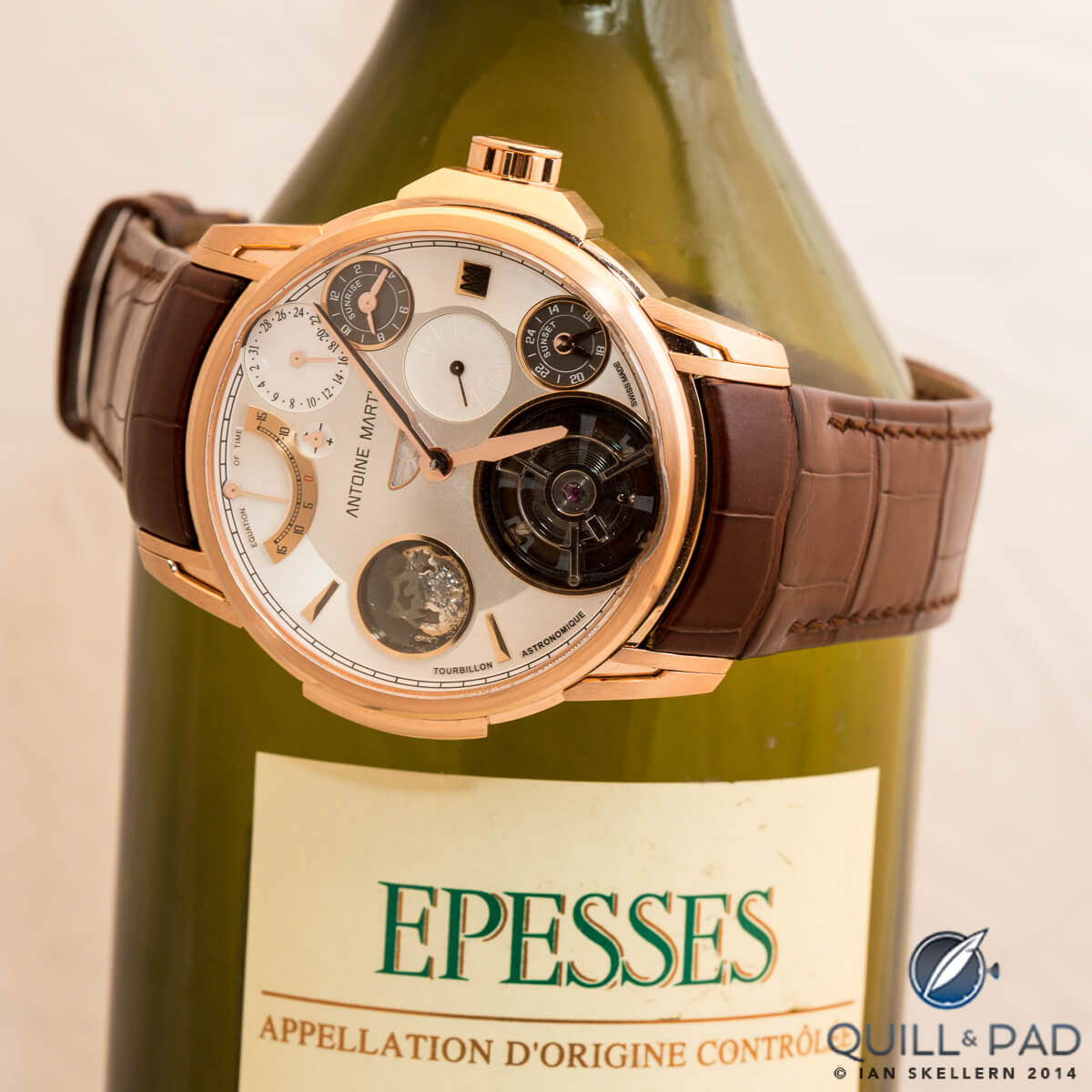
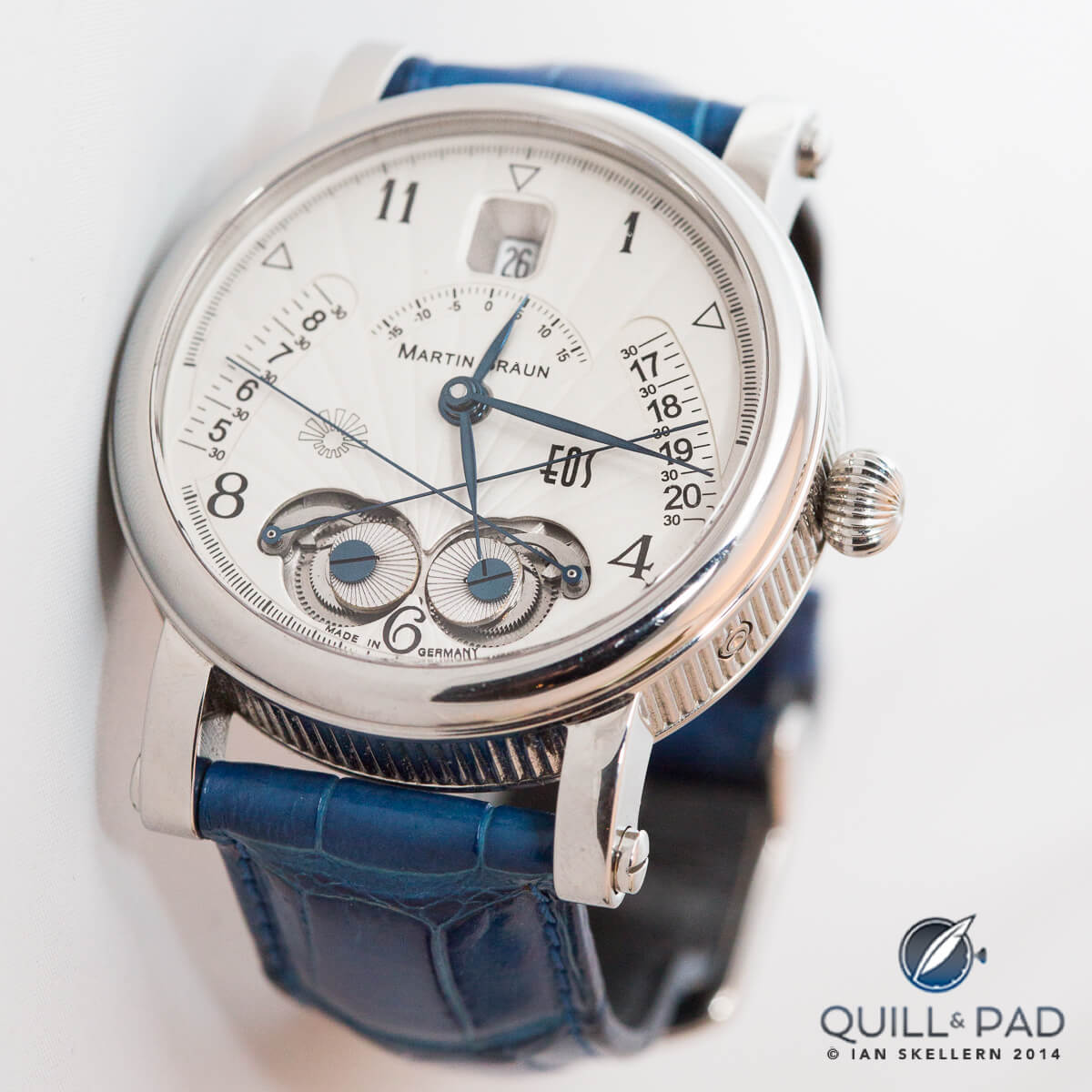
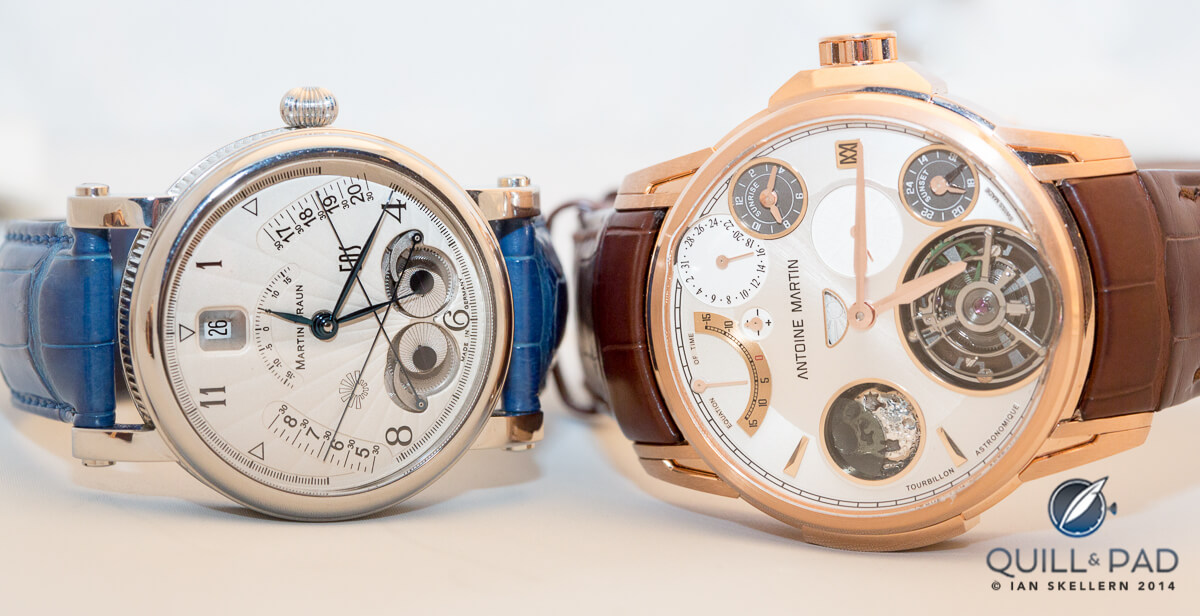

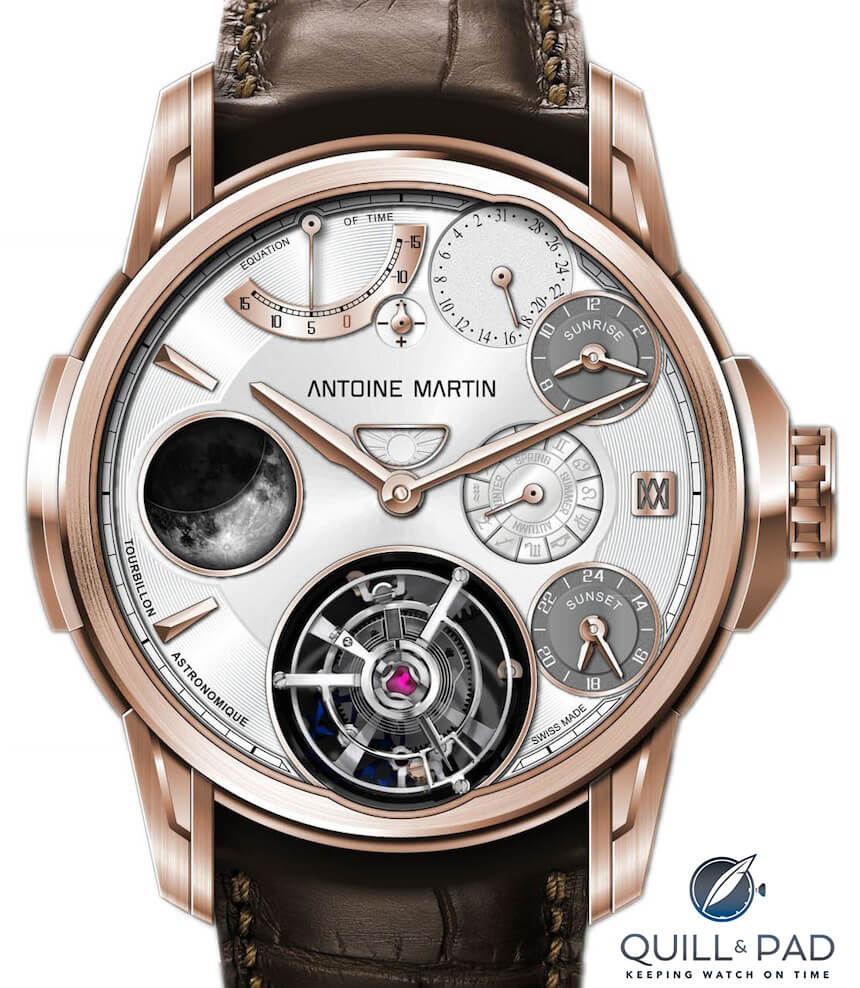
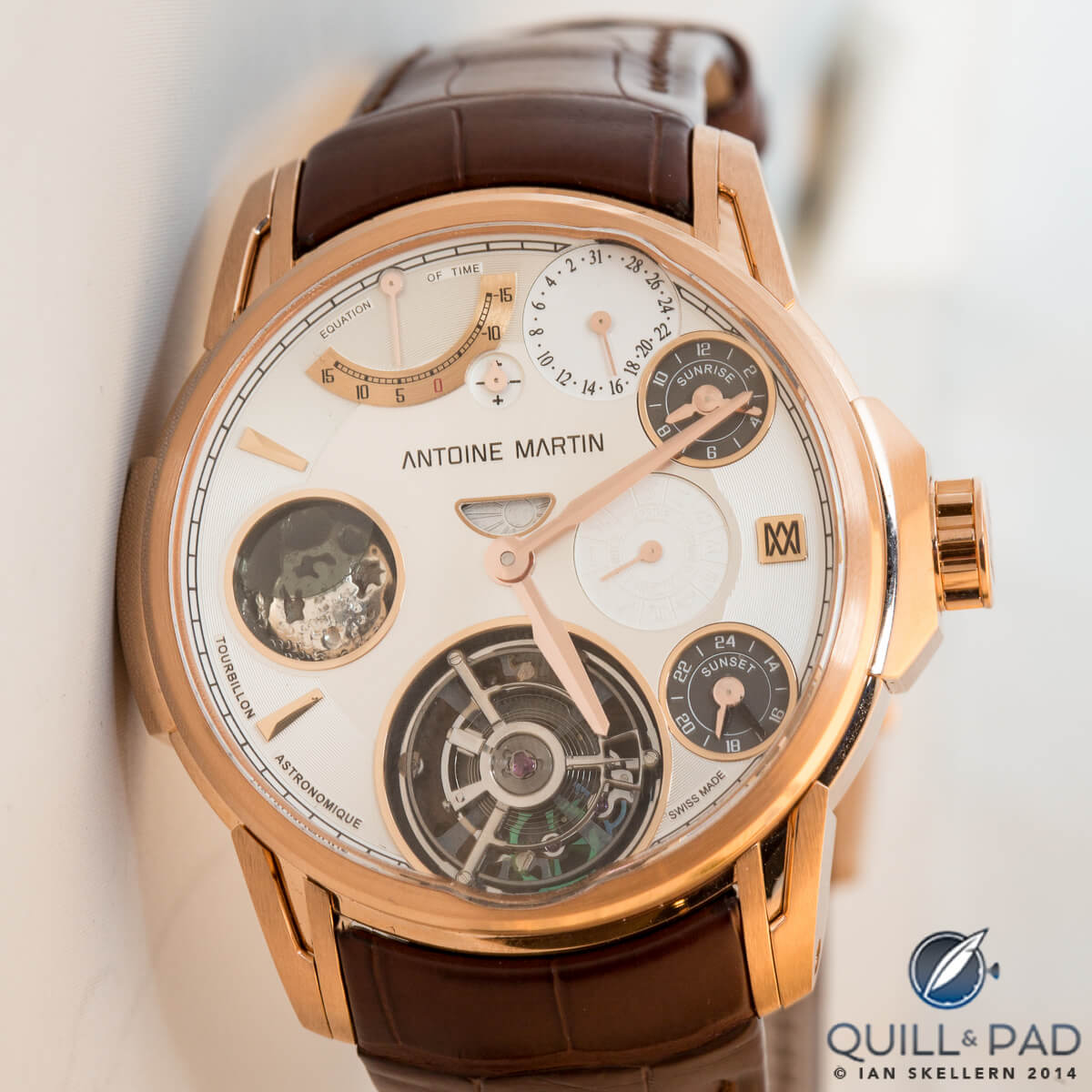

Thank you for this very interesting article on Martin Braun, Elizabeth! He truly is quite a gifted watchmaker. And you answered one of the questions I had about Martin and that was what happened to his line of watches from a few years ago. I can remember visiting his website with his line of watches. The Tourbillon Astronomique is quite a stunning piece and quite an achievement to mark his 50th birthday. I turn 50 next year and I don’t think I’ll be doing anything so grand to mark my half-century!
You’re very welcome, John! Martin’s work has been fascinating all these years and I hope we see much, much more of it in the future!